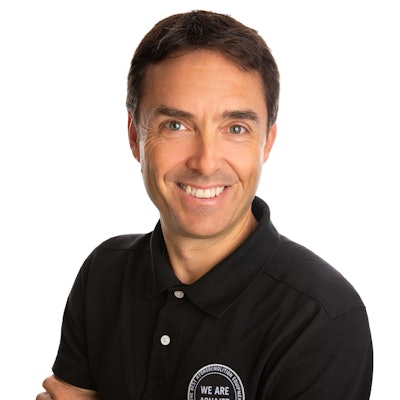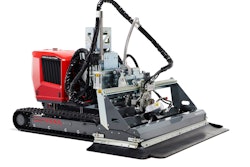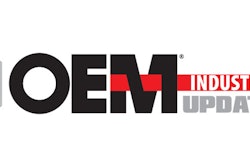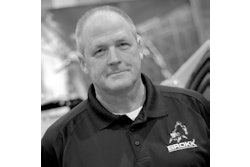
Each year, our State of the Industry issue looks at the top trends and technologies within the heavy equipment industries. We also dig into current and future market conditions, as well as regulations which may currently or in the coming years have an impact on how the industry will go about designing its equipment.
To get the best insights, we speak with executives from a variety of companies working in the industry—everyone from associations, to OEMs to component suppliers. Below are responses provided by Keith Armishaw, Aquajet Business Development Manager – North America.
Read all of this year's executive Q&As.
Automation & Smart Systems
How has automation helped the heavy vehicle and equipment industries become more productive?
Higher productivity is one of the major contributions OEMs like Aquajet can offer to our customers and to the industry overall. Automation essentially solves problems in a smart, streamlined way, eliminating patched-together solutions that take a long time to set up and manage and then don’t deliver an ideal result.
With Hydrodemolition, robots provide 25% better productivity than more traditional methods, such as crews with hand-held pneumatic devices, while increasing safety by removing the operator from the most dangerous situations. Hydrodemolition robots automate the process of removing concrete. But a byproduct of the Hydrodemolition process is dirty water. Over the years, contractors have set up systems to collect water and bring in vacuum trucks, which is time-consuming and expensive. Some have found water treatment systems, but they require constant monitoring and involve handling dangerous chemicals. Aquajet knew there was a better way and developed the EcoClear water treatment system. This system is a compact, fully automated and high-volume unit that can be set up in less than 4 hours. Once it is up and going, the operator can check it occasionally and work on other tasks. In a mere hour, you can have treated water that is ready to be recirculated through the equipment or discharged into the environment. We constantly work with our customers and development team to improve products and to create new automated machines.
What further benefits will automation bring to the heavy vehicle and equipment industries?
It goes without saying that automation has greatly improved worker safety. In our case, Hydrodemolition robots replace handheld tools like jackhammers. With remote operation, workers don’t have to deal with the negative effects of constant vibration and back thrust. And Hydrodemolition involves water, so silica dust exposure is virtually eliminated.
But we’re also seeing technology that addresses noise, which has become a major concern on many jobsites. The negative effects of sound exposure has led to sound abatement practices as contractors work to minimize noise pollution. However, these techniques — such as hoarding and working off-peak hours — are not always cost-effective. Solving this problem was the driving factor behind our Ecosilence. By enclosing the high-pressure pump in a 20-ft. (6.1 m) shipping container with advanced sound-absorbing cassettes and an integrated muffler system, our engineers were able to greatly reduce decibels while the machine is in operation.
How has the development and use of smart systems evolved, and what further impacts will they have on the industry?
Smart technology is becoming more common — both in terms of equipment function and equipment management. Aquajet Online is our cloud-based product for equipment tracking, remote diagnostics and analytics. It essentially gives the owner a “visual” of the equipment operating in the field. Tools like this streamline machine upkeep, prevent unnecessary downtime and give contractors instant access to data that helps them make very analytical business decisions.
Our Smart lance technology has really improved efficiency and increased the removal rate per hour. It automatically calculates and coordinates the complete operating process and optimizes the removal from the operator’s selection. It can be programmed, for example, to cut geometrical shapes. On a recent bridge restoration, this meant the contractor was able to remove all the concrete with a robot, despite irregular angles that would be difficult to access without this technology. The contractor was able to remove the material without scrambling to find alternative options or bring in another contractor. Every time the industry solves a problem with technology, we’re freeing ourselves to tackle the next problem to ultimately deliver better results, more quickly and safely.
Challenges & Opportunities
What are the biggest challenges facing the industry currently, or do you see the industry facing in the coming years?
Labor shortages continue to be an issue, so technology that allows contractors to still be productive is significant. And when you have good employees, it’s important to keep them healthy, so they are in a position to show up and work efficiently every day. It’s hard for them to be at their best if they’re sick, injured or worn out. When it comes to concrete removal, remote-controlled Hydrodemolition robots offer those safety and productivity benefits. The data from telematics also gives insight into how to best use employees’ time and skills — and if they might need additional training.
I think we will also be called upon to continue designing more environmentally friendly equipment that uses less fuel and lowers emissions. This is certainly a consideration as we develop new products. The Ecosilence high-pressure pump is a recent innovation that uses start/stop technology to improve fuel consumption for a greener overall machine.



















